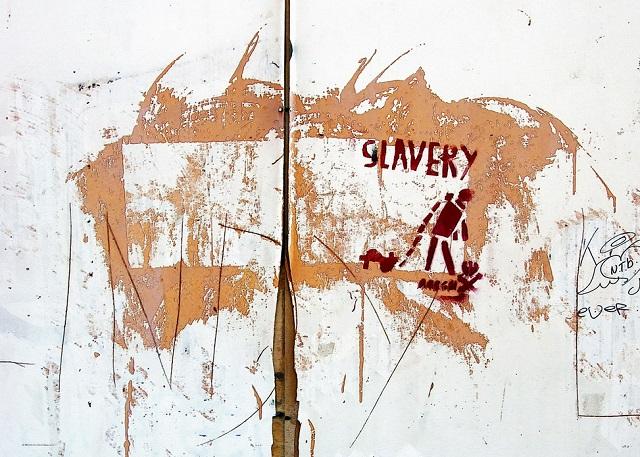
We tend to think of ‘slavery’ as an archaic term. But the fact stands that slavery is still a significant issue in the contemporary world; both in the Asia–Pacific and more locally here in Australia. The problem may be widespread in our region but 2 December 2016—when the United Nations observed the ‘International Day for the Abolition of Slavery’—passed without stimulating much meaningful reflection.
The day marked the adoption of the United Nations Convention for the Suppression of the Traffic in Persons and of the Exploitation of the Prostitution of Others in 1949. Since that date, numerous international instruments to prevent slavery have entered into force. Those include the United Nations Convention against Transnational Organised Crime (2003) and its supplementary Protocol to Prevent, Suppress and Punish Trafficking in Persons, Especially Women and Children (2003) among others; both of which Australia has ratified.
Australia is known as a destination country for people trafficked from parts of Asia—Thailand, Republic of Korea and Malaysia alike. Australia has recorded instances of human trafficking and other slavery-like practices including servitude, forced labour and forced marriage. Historically, the numbers were made up predominantly by women in the sex industry. But interestingly enough, a shift over the past two years has seen a greater number of victims in the agriculture, construction, hospitality and cleaning industries. But even so—and while statistics grow significantly worse in the region—Australia has actually seen an improvement in the numbers, from an estimated 4,300 living in slavery in 2014 to 3,000 in 2016.
Looking to the Asia–Pacific more broadly, no country is free from the effects of slavery and the numbers are alarming. According to The Global Slavery Index, the region holds a stunning two thirds—approximately 30 million people—of the estimated global 45.8 million enslaved people. Forced labour, child soldiers, forced begging, sexual exploitation and forced marriage were all identified forms of slavery across the region. In absolute terms, China and India have the highest number of people living in slavery. But when considering the estimated percentage of a population in slavery, the biggest culprits in the region are North Korea, Cambodia and India. Worse still, the situation is only deteriorating, with numbers on the rise since 2014 when the estimated number living in slavery in the region was 23 million.
The trends primarily mirror the lack of solutions to address the root of the problem in the region—namely, labour exploitation in supply chains of food production, garment and technology industries. In 2012 the ILO estimated there to be 20.9 million forced labourers globally, with 56% in the Asia–Pacific alone. Those numbers are especially worrying for Australia, given that four of our top five import sources are Asia–Pacific countries; three of which—China, Republic of Korea and Thailand—boast poor track records of slavery
Australian businesses continue to be implicated in labour abuses in-country and abroad, with slave labour occurring in the manufacturing of Australian clothing in North Korea, labour exploitation in Vietnamese, Chinese and Thai fishing industries and labour abuses in domestic fresh food supply chains and 7-Eleven stores. That reflects the need for a broadened approach to anti-slavery that encompasses working with companies, investors and consumers, to complement the existing traditional criminalisation focus.
Remarkably, that was acknowledged at the Sixth Ministerial Conference of the Bali Process on People Smuggling, Trafficking in Persons and Related Crime earlier this year, which was co-chaired by Australia and Indonesia. Australia’s Foreign Affairs Minister Julie Bishop acknowledged the need to work with the private sector to ‘combat human trafficking and related exploitation, including by promoting and implementing humane, non-abusive labour practices throughout their supply chains.’
Australia’s general response to slavery and human trafficking and National Action Plan to Combat Human Trafficking and Slavery have been commendable and exceptional compared with other regional countries. But it could do more; tangible solutions to the specific issue of supply chain labour exploitation have been delayed.
The Supply Chains Working Group, established under the Attorney-General’s Department in 2014, presented the Australian government with nine recommendations to combat supply chain exploitation in December last year. On 28 November, Australia responded and convened its eighth meeting of the Australian Governments National Roundtable on Human Trafficking and Slavery, announcing that it’ll work with business and civil society to:
- create a suite of awareness-raising materials for business;
- further consider the feasibility of a model for large businesses in Australia to publicly report on their actions to address supply chain exploitation;
- examine options for an awards program for businesses that take action to address supply chain exploitation; and
- explore the feasibility of a non-regulatory, voluntary code of conduct for high risk industries.
That response, already a year delayed, remains vague about committing to any of the Working Group’s recommendations. The only clear cut commitment is to create awareness-raising material, a worthy enough step, but the meatier suggestions are seemingly still just for ‘consideration’ at this point. In comparison, the US and UK have implemented measures requiring businesses with an annual turnover greater than £36 million to report on efforts to eradicate slavery and human trafficking from their direct supply chains.
Australia needs to step up its response and prove commitment to tackling labour supply chain exploitation through timely, tangible solutions. If the short term game is an Australian seat on the Human Rights Council, the longer term game must surely be one where Canberra pursues good international citizenship in order to stamp out slavery and buttress stability in its own backyard and beyond.